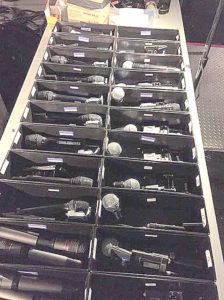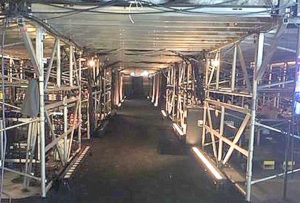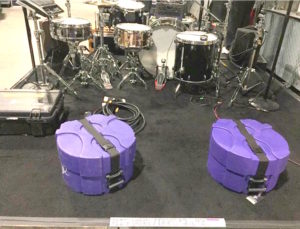
Rock Star Tech Experts Are GRAMMYs Unsung Heroes
By MARCY KRAFT
Another chapter of “Music’s Biggest Night,” the 59th GRAMMY® Awards is now in the bag.
For the first time, James Corden hosted the show. Many on social media voiced an opinion as to whether the proper artists were acknowledged with the GRAMMY gold.

As this is a peer-voted award, the artists in the trenches are the ones making the selections. There is, however, an unsung hero in the game. The “machine” that creates and puts on the GRAMMY Awards telecast is a team of dedicated tech veterans.
It is the most complex audio production in television. I was privileged to get a peek at the backstage setup prior to the show, and no matter how many live production events I have witnessed, this is an amazing sight to see. The construction for the massive sets used in the show actually begins mid-December.
The Staples Center is where the magic takes place and has been home to this awards show for 12 of the last 13 years. In order to host “Music’s Biggest Night,” the stadium must undergo a tremendous transformation. For six days, a crew of 36 riggers loads in all the gear that is required for 21 different setups that are used to perform 29 separate songs.
GRAMMY Awards’ Elaborate System
There are so many moving parts to create this elaborate system. The staff begins with the hanging of 157 tons of lighting, sound, and set pieces from the ceiling of The Staples Center before the three days of rehearsals even begin. Four hundred chain motors are used to hoist up lighting and set pieces that hang from more than 500 points on the ceiling. Seventeen 53-foot tractor-trailers are utilized to bring in all this rigging.
When it is all done, it will take the crew 27 hours to tear it all down; a truly massive undertaking. As we step onto the loading dock behind Staples, there are large trucks stationed just outside. The rock stars inside the trucks are the ones that record and mix the entire broadcast.
Producer-engineer Glenn Lorbecki, GRAMMY Award Telecast Advisor to Music Mix Audio, and John Harris and Eric Schilling, Co-Music Mixers in the Music Mix Mobile remote recording trucks, are members of the award-winning GRAMMY telecast audio team and have been involved in their roles for several years.
As well as mixing the sound, the recordings of the rehearsals that can be used for review of the performance by the artists themselves to ensure that they appear as desired. Joining them was Michael Abbott, who returned as GRAMMY Audio Coordinator. As many as 150 stagehands, 130 technicians and 18 stage managers are on hand to guarantee the ideal production.
GRAMMY Gear is Carefully Prepped

Backstage, there are risers and rigs everywhere that are all preset with the gear required for the performances. We see drum sets being shined and mic’d. Platforms are being built and what appears to be seating for orchestral performances is put into place. Costumes and make-up mirrors seem to line up at attention.
Setups labeled “Lady Gaga and Metallica” and “Daft Punk and The Weeknd” are ogled as we imagine what that performance will look like. This gear is all preset on individual platforms and then wheeled onto stage “as is” when needed, and placed into position by the phenomenal crew.
We then stroll up to a long table filled with many different microphones. More than 400 mics are needed to cover the different bands and host performances. These beauties range from being fully “ blinged out” showpieces to the state-of-the-art $5,000 to $10,000 audio gems. Microphones are also placed all around the Staples Center to highlight and capture hot pockets of activity in the audience during the performances.
A peek onto the stage reveals Bruno Mars in street clothes rehearsing his set. I think everyone stopped breathing for just a moment. We can see that the auditorium seats are filled with placards with the celebrity names and photos that are used to alert the cameramen where to find the shot they will need.
It takes more than 3 megawatts of power to run all the lights, sound and video equipment needed for this show. Twenty-three projectors were used to illuminate the huge screen behind Adele as she opened, singing her chart-topper “Hello.” So much power is required, that additional generators had to be brought in.
Talented Production Team Keeps GRAMMYs Running

Eight hundred computer-controlled lights are used, as well as 200 fixed lights and 100 strobe lights that are run by four lighting programmers to ensure a properly lit show.
All of that goes into the CBS broadcast. Next year, The GRAMMY Awards is rumored to be held in New York, giving The Staples Center a break in the long run.
While artists were on hand to offer performances and accept awards, behind the scenes there is an army of rock star crew members that make this all possible. A round of applause to all crew members who invest so many long hours to make this happen.
Marcy Kraft is a music industry expert and contributor to EastCoastRocker.com
